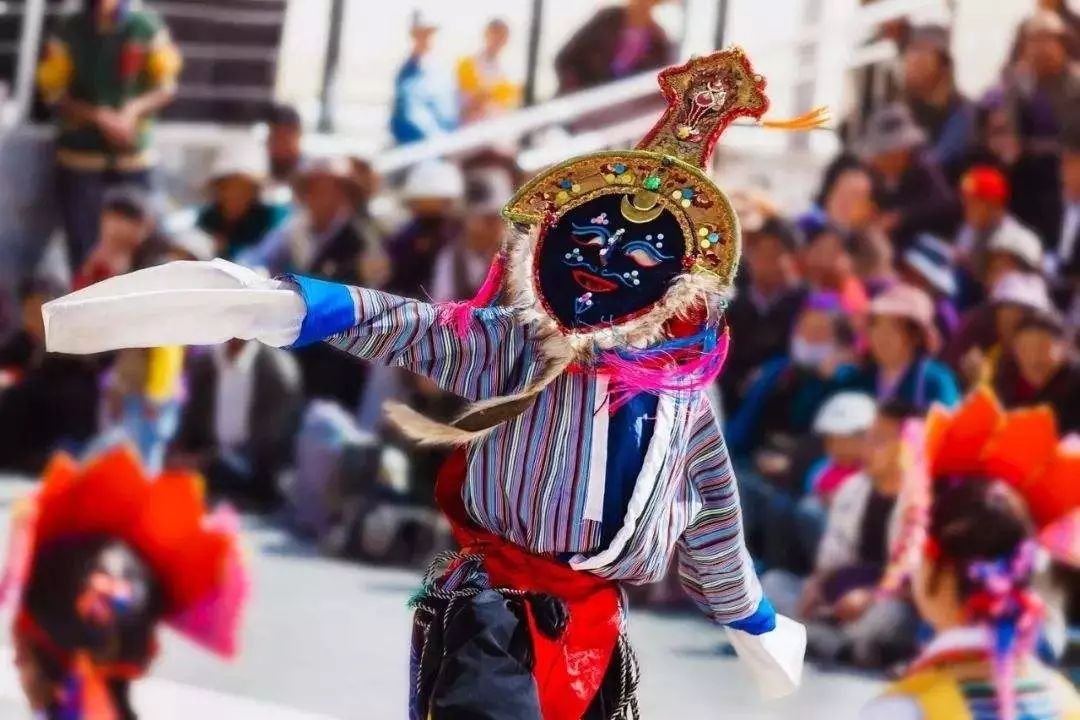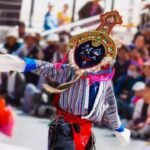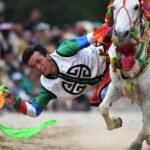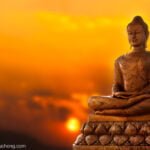Tibetan Festivals in first Lunar Month
The Great Prayer Festival (Mon-lam)
This is the greatest religious festival in Tibet. Originated by TsongKhapa in 1409, the founder of the Geluk sect. Monks from the Three Great Monastery of Tibet assemble in Jokhang for prayer to Shakyamuni’s image as the living Buddha.Read Details
The Large Dharma Transmission Ceremony: The Large Dharma Transmission Ceremony is also called “Monlam Chenmo’ ”in Tibetan.From 4th-15th day of the 1st Tibetan Lunar Month, the festival is celebrated in honor of Lord Buddha Sakyamuni.
Butter Lamp Festival: The Butter Lamp Festival is celebrated oLn the 15th day of the first month every year by the Tibetan in Qinghai and Gansu provinces and it will be held on December, 19th 2011. It s the last day of the Great Prayer Festival. To honor the victory of Sakyamuni in a debate against Heretics,people assemble at the Barkhor Street in Lhasa, worshipping the Buddha in the daytime and by nightfall. People usually light thousands of lamps filled with butter in an intriguing assortment of designs including immortals, animals, flying birds, beasts, and flowers.. The whole festive will last all night. People sing and dance in great joy throughout the night.
Festival in Second Tibetan Lunar Month
Exorcism Festival:
On the seventh of the second month, those who dress up like ghosts will be driven to the other side of the Darxia River, and can’t return within seven days.
Buddha Exposing Festival: On the eighth of the second month, the Monasteries will conduct scripture chanting, show the giant Buddha and all kinds of treasures.
Tsokchoe: During later February, another Dharma ceremony comes off, which is named “Tsokchoe” in Tibetan. The activities are similar to those of the Large Dharma Transmission Ceremony. The only difference is that “Tsokchoe” ceremony is smaller than the other. Therefore, it is referred as the Small Dharma Transmission Ceremony.
Festival in Third Tibetan Lunar Month
Reincarnation and transmigration of Buddha’s Warrior Attendant: It is a festival on the fifth of the third month to memory the first day for the rotation of Tibetan calendar.( Fire Rabbit Year—— AD 1027)
Festivals in Fourth Tibetan Lunar Month
Saga Dawa Festival–the Birth of the Buddha: Held by the Dragon King Pond, it was celebrated on the 15th of the fourth month for the Lord Buddha Sakyamuni’s birth, enlightenment and death. The people including monks and laymen, men and women in Lhapulun don’t eat or drink or speak for a day and two nights, it is called festival.
Sunning of the Buddha Festival: The occasion is held yearly on 8th in the fourth month by the Tibetan lunar calendar in Kangding prefecture, Garze autonomous prefecture, Sichuan province. All the activities on the Festival constitute the large-scale activity of Kora (circumambulation) offering sacrifice to gods and Buddha and praying for blessings.
Festivals in Fifth Tibetan Lunar Month
The San Marinese Festival: According to legend, on the fifth day of the fifth month of the Tibetan calendar, people will go up the mountains to collect medicines because it is on the day that the San Marinese will scatter holy water and medicine.
The Colorful Lingka Festival: The Tibetans are a people whose love of nature has given rise to a special national custom, the Lingka Festival. The fifth month by the Tibetan calendar is the best season for Lingka, so people leave their houses and put up tents in the thick forest in Lingka, and happily enjoy the charity of nature. Read Details
Lotus Buddha’s Birthday: The tenth of the fifth month is the birthday of Lotus Buddha . Many places such as Xiezha of Shannan and Khaqu of Luozha will celebrate the day. Every year there will be a petty celebration and every twelve years there will be a big celebration.
Festival in Sixth Tibetan Lunar Month
Paying Homage to the Holy Mountain Festival: A day of sermon for Shakyamuni ,Buddhist followers wear new cassocks to worship Buddha on mountains on the fourth of the sixth month in Tibetan calendar, in Lhasa area.
Festivals in Seventh Tibetan Lunar Month
The Shoton Festival in Lhasa: It’s one of the Tibetan traditional festivals. In Tibetan, “sho” means “Yoghurt” and “ton” means “banquet”. So Shoton Festival is also called the ‘Yoghurt Festival’. Subsequently, as the activities of Shoton Festival gradually changed into an activity with Tibetan opera as a major part, so people also called it the Tibet Opera Festival
Read Details
Horse race and archery Festival: Horse race and arrow shooting are popular sports on the vast expanse of grassland in Tibet, which has a history of more than 500 years in the regular festival ceremony, starting from Gyantse in back Tibetan area.
Read Details
Festivals in Eighth Tibetan Lunar Month
The Onkor Festival (Harvest Festival): It is an occasion that Tibetans celebrate their harvest. “On” indicates “field” in Tibetan, “Kor” with the meaning of “twining round”, and “Onkor” means “twining round the highland barley”. The festival is popular in the rural areas of Shannan、Lhasa、Shigatse.In general, Onkor is celebrated at the end of the seventh month on lunar calendar just before peasants begin to reap their crops. It is said that the Onkor Festival has enjoyed a history of more than1500 years, and first became popular in the valley area of the middle and lower reaches of Yarlung Tsangpo River. In order to ensure the plenteous harvest, the Tibet King sbu-de-gung-rgyal asked the hierarch of Bon religion for guidance. Following the tenets of Bon religion, the hierarchy of Bon religion taught the peasants to walk around their field, beseeching the Heaven for a plenteous harvest, which is the origin of the Onkor. During the late years of the 8th century, Tibet came to the Silver Age of Tibet Buddhism when the representative sect was the Nyingmapa sect, and the Onkor activity therefore was tinged with the features of the Nyingmapa sect. In front of the procession people will hold the futures of Buddhism and recite lection. After that ,Onkor became the formal Tibetan traditional Festival. With the evolution of the time, the contents and forms of the Onkor changed continuously, including horse riding ,arrow shooting ,Zang opera etc. Now to celebrate the festival, people , old and young , will dress up, lifting “ harvest tower” made of highland barley and beating drums and gongs, singing in their odes and walk around the fields in prayers for a bumper harvest, and then followed by a horse race, arrow shooting, Zang opera and dances, together with an outdoor banquet.
Festival in Ninth Tibetan Lunar Month
Grant God Festival: On the 29th of the ninth month in Tibetan calendar, Buddhists go to worship Buddha, all are charitable and chant sutras.
Festivals in Tenth Tibetan Lunar Month
Paelai Festival: known as “the Celestial Mother Festival” or “pelha Rabzhol” in Tibetan. Each year, on the 15th of the tenth month in Tibetan calendar, religious activities are held in temples throughout Tibet,especially for Tibetan women to pray for happy marriage and true love.
Tsongkhapa Butter Lamp Festival: It is held on the 25th day of the 12th month, which is in November or December in Gregorian calendar. It is the day on which Tsongkapa, the founder of the Gelug Sect met his demise. Every house and every monastery hold light lamps on the roofs of their houses and windowsills chanting prayers in memory of Tsongkapa in the night.
Festivals in Twelve Tibetan Lunar Month
Ghost-Exorcising Festival: ”Guthuk “in Tibetan ,falls on the 29th of the 12th Tibetan month. During this festival, to drive away evil spirits and to welcome the New Year, large -scale sorcerers dances take place at monasteries and in every household, people do cleaning, and decorate their houses.
Tibetan New Year (Losar): The Tibetan New year, known as Losar, is the most important local festival which is celebrated for 2 weeks during the month of twelve and first as per the lunar calendar.
Losar festival commemorates the arrival of new year, celebrated by people who live in Ladakhi or Tibet. The festival is marked with ancient ceremonies,the performance fights between good & evil, chanting and passing the fire torches through the crowds. The dance of the deer and the exciting battles between the King and his ministers make the festival more joyful. This festival is full of dancing, music and merry-making.
















